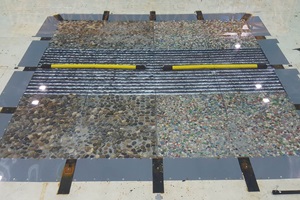 Wood has led a joint industry project (JIP) to improve knowledge and understanding of submarine cables behaviour on the marine environment and rocky seabed. The CABILITY: Cable On-bottom Stability JIP, which gathered key industry players including EDF Energies Nouvelles, RTE, Naval Energies, VBMS, LDTravocean, Bardot Group, Silec Cable (General Cable) and DNV GL, has spent the last year developing a new set of industry guidelines.
Wood has led a joint industry project (JIP) to improve knowledge and understanding of submarine cables behaviour on the marine environment and rocky seabed. The CABILITY: Cable On-bottom Stability JIP, which gathered key industry players including EDF Energies Nouvelles, RTE, Naval Energies, VBMS, LDTravocean, Bardot Group, Silec Cable (General Cable) and DNV GL, has spent the last year developing a new set of industry guidelines.
Submarine cables are required to connect renewable with the grid. However, it was acknowledged that the guidelines that are currently in place were originally derived from the oil & gas industry and are more suited towards assessing the stability of pipelines. This anomaly can result in overly conservative designs with onerous recommendations and the need for expensive stabilisation systems which could, in turn, jeopardise the financial viability of new projects so the JIP has developed a new set of industry guidelines to address this.
This new methodology, which is based on numerical models calibrated with laboratory tests performed in the wave and current basin of the Oceanide test facility in the South of France, provides advice on assessing subsea cables on-bottom stability on rocky and non-smooth seabed. This parametric description of the physical mechanisms driving cables stability resulted in the implementation of a methodology for on-bottom stability analysis with a gain in conservatism compared with previous standards.